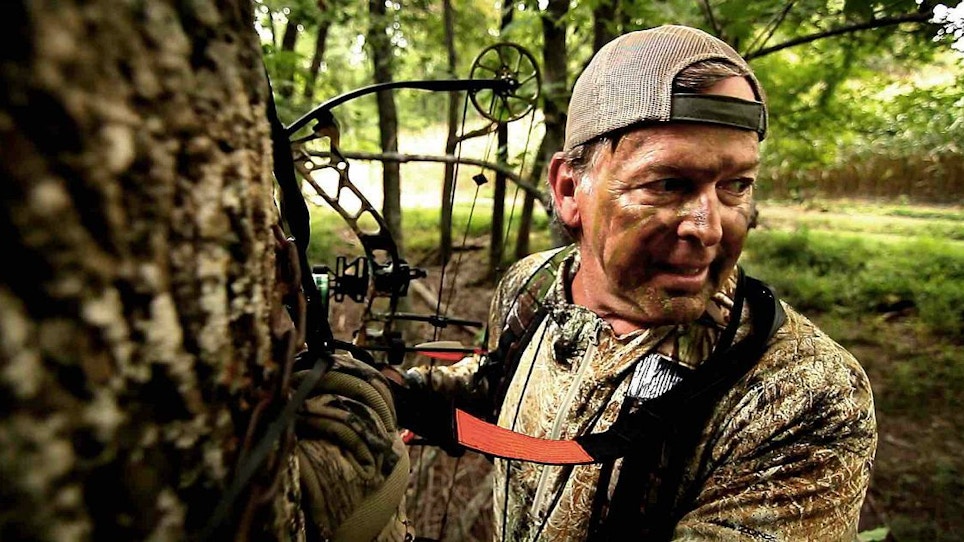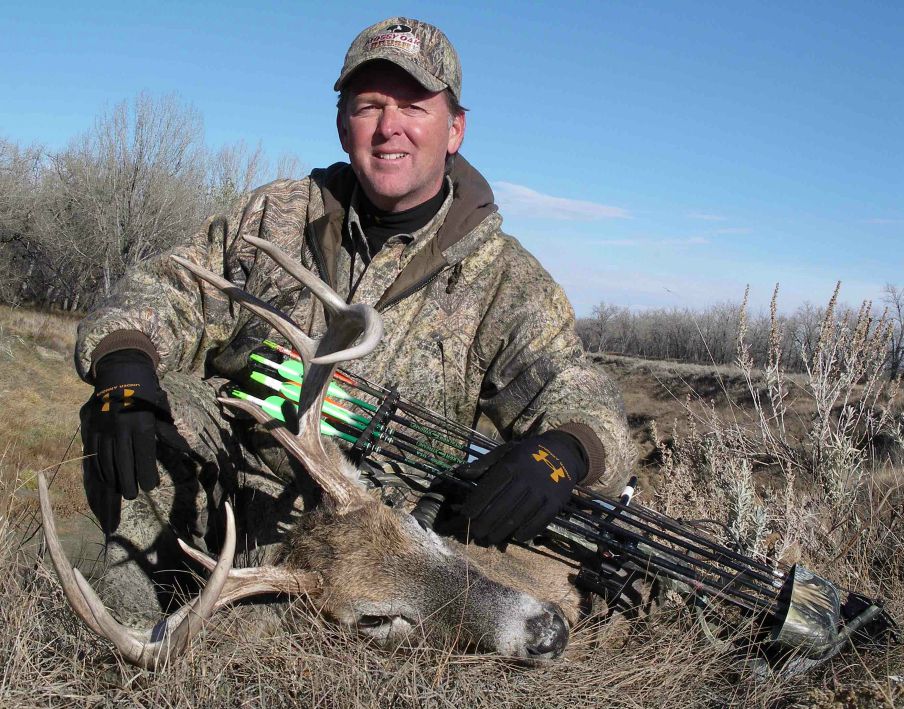Maybe you were busy with yardwork, real work, chores, kids’ sports — it really doesn’t matter. The fact is, you didn’t have much time to scout for deer this summer. Now it’s almost whitetail bow opener and you’re in a panic. I mean, where the heck are you going to find an early season whitetail, right?
First, take a breath. Second, calm down. We’ve got you covered. Here are some solid early season options that may just get you bowhunting-close to the whitetail of your dreams. Search for these type of terrains and structures on an aerial map and Google Earth. If you’ve hunted a private property or public area for years, then think where these early season whitetail spots are located.
1. Ditch It
One September morning in Montana, I froze as an 8-pointer trotted toward me through the woods. He was coming off an alfalfa field and moving fast for his bedding cover along the Milk River before the sun climbed fully into the eastern sky. The woods were flat as a pool table and pretty open, but I wasn’t worried, even though I was hunting on the ground and the buck was coming right at me.
As he skidded down the bank and disappeared into the ditch in front of me, I drew my bow and stepped out from behind my hiding tree. When the 8-pointer popped out on my side of the ditch, I ran an arrow through his lungs at 16 steps.
A wide ditch or swale that is 3 to 5 feet deep — or it could be a dry creekbed or an old irrigation canal — that runs and twists for a good way through a woodlot is one of my favorite bow setups. Why? It’s a natural funnel. Many days I have watched mature bucks get down in the trenches and maneuver through the woods.
You might get a shot by setting a treestand on either end of the ditch. If you walk and scout the entire length of the ditch, you will likely find a couple of spots where trails come together and funnel across the ditch. These are killer early season whitetail ambush locales.
Of course, you can really have fun and hunt on the ground like I did when I killed that Montana 8-pointer. Get the wind right, stand behind a tree tight to the ditch and watch the woods on the other side. If and when a buck crosses the ditch or walks down it, draw, step out and shoot when he’s not looking. This is an especially effective tactic if you’re really pressed for time.
2. End Run
Loggers bulldoze windrows of trees alongside new access roads when cutting timber. Clearing pastures or putting in food plots, farmers and landowners pile logs along edges of the standing timber. You get the idea. Be on the lookout for these linear structures.
Deer can’t walk through the barriers, so naturally they walk beside them and skirt them on either end. Check the ends for trails curling around. Set up where the early season whitetail sign is good and the wind is right.
Once in a while deer can walk through a barrier. Scout along a line of piled-up trees or brush and look for an open gap in the middle of the debris. If deer are sneaking though, you’ll see their tracks. My friend, and Outdoor Channel personality, Mark Drury killed one of his biggest bucks — a 190 class behemoth — by hunting from a treestand near a brush-row chute a few years back.
3. Bank On It
Most every small lake, dam or pond off the beaten path is a natural bridge for bucks. Look for a deer trail running along the top of a dam, or low on the backside of it where there is generally more cover. If you can hang a treestand close to a top trail where the wind drives your scent over the water you’ll never get busted, but sometimes a tree for a stand is difficult to find in these areas. As a rule, you’ll have the best chance to find a good tree, and the best odds of spotting a buck, by hunting the low trail in the cover.
4. Point of Timber
One of the easiest spots to find on an aerial source is a 5- to 15-acre point of timber tucked in the “S curve” of a river or stream and surrounded by agricultural fields. If there’s good timber and ground cover at the point, you can bet does and bucks will bed deep by the water and filter in and out on several trails as they feed in nearby corn, beans or alfalfa.
It’s a gamble on which of those trails a buck will walk from day to day. Mature bucks often vary greatly when it comes to the trails they use when moving in and out of bedding areas in early fall. Look for the freshest tracks and shiny rubs, and set up there. I like to start off hunting 100 to 200 yards from the thickest cover in the bedding area, and hunt for a buck coming out of the point in the evening.
5. Secret Funnel
A little funnel or bottleneck that is not visible on a map is easy to miss, but it can be a great place to kill a whopper early season whitetail with your bow. The only way to find a secret funnel is to vary your walks each day as you scout and hunt. Look around in different spots for a low spot in a wire fence, a tight creek crossing deep in the woods, or a 30-foot-wide strip of elevated dry ground between two swamps or sloughs. Chances are there are throngs of small terrain features like these that confine the movements of the bucks that dwell on your property. Look closely for them and plan an ambush.
What’s New in Whitetails:
EARLY SEASON SCIENCE TIP: HUNT TIGHT TO WHITETAIL BUCK BEDROOMS
TOP 3 REASONS TO CARRY A CROSSBOW ON PUBLIC LAND
FIRST LOOK: PREMIUM SCENT SPRAY CANS FROM WILDLIFE RESEARCH CENTER







